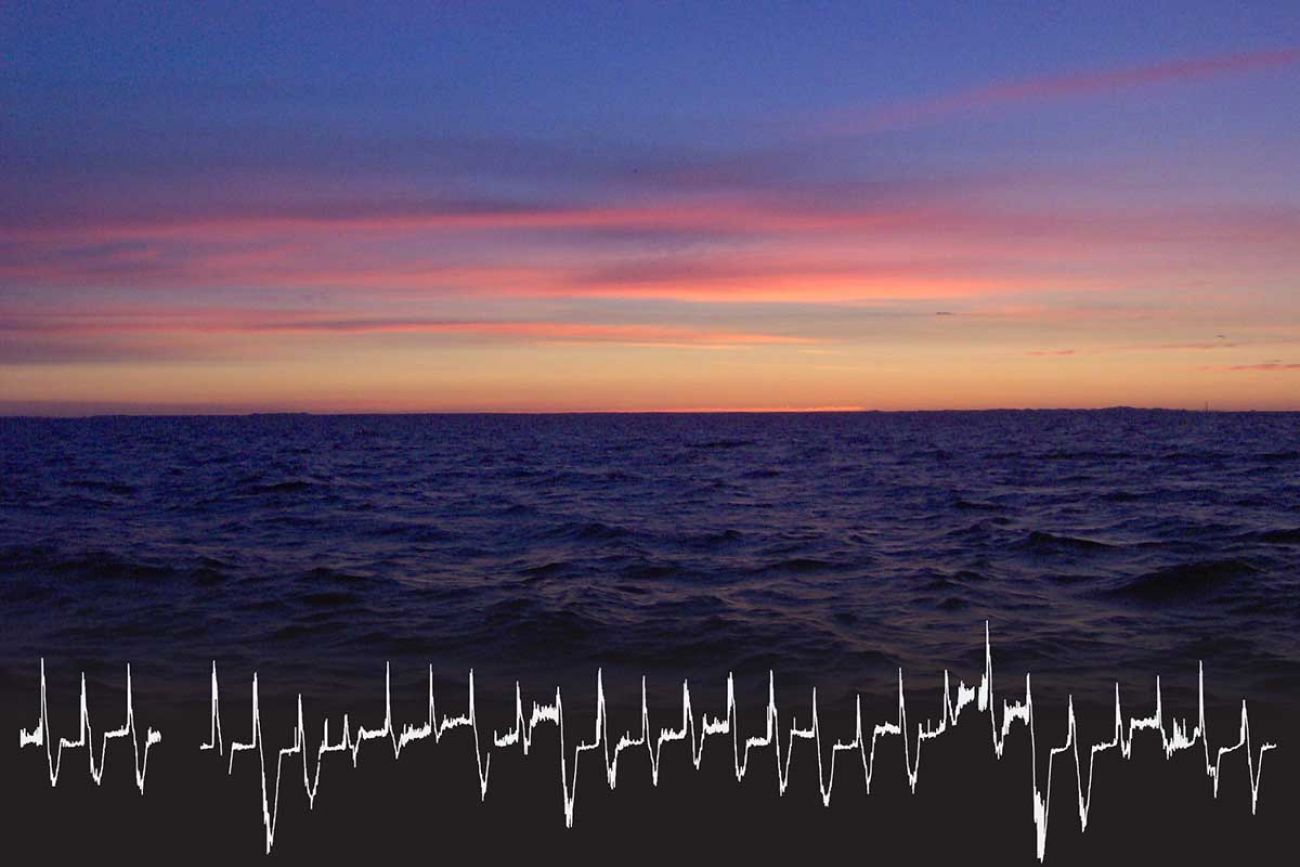Report: Lake Michigan is ‘running a fever.’ More storms, less fish possible.

Diminished surface ice is just the beginning: Climate change is warming Lake Michigan and other big lakes all the way down to their chilly depths, according to new federal research.

In a first-of-its kind study, scientists with the National Oceanic and Atmospheric Administration’s Great Lakes Environmental Research Laboratory have used the only known long-term dataset of deep-lake temperatures to determine that Lake Michigan’s temperature is slowly increasing over the past 30 years.
Related:
- As northern Michigan warms, scientists bring tree seedlings from the south
- A big fight in Lansing over fishing rules on the Great Lakes
- In flooded Michigan neighborhoods, who should pay for sea walls?
- Michigan is on thin ice. Get used to it, climate experts say.
- How we know Michigan will lose lake ice if we don’t change our ways
They’re subtle, tiny changes, but together, they could shorten big lakes’ winters, lengthen their summers and have a big impact on everything from fish populations and algae blooms to winter storms and erosion.
The report comes after Michigan’s Great Lakes were slow to ice over this winter, and it follows other research that predicted parts of the Great Lakes will be ice-free by midcentury if climate change continues apace.

The new findings are concerning because deep waters of big lakes are far less responsive to changes on the surface, since they are isolated from wind, sunlight and other surface influences that can affect temperature.
Bridge Michigan spoke with NOAA researcher Eric Anderson, lead author of the study. Here’s what you should know about the research.
Large lakes have shorter winters and longer summers.
Michigan is a four-season state, but Lake Michigan and other similar large lakes are two-season water bodies.
Their annual temperature regime is characterized by a winter and summer, each triggered by twice-annual “turnovers” in which surface water mixes with deep water.
After a spring turnover, Lake Michigan settles for the summer, forming two distinctly different layers of water. Water near the surface warms 40 degrees or more, while the deep layer remains relatively stable, hovering within a couple of degrees of its 4 degrees Celsius average (39 degrees Fahrenheit).
In the fall, winds mix the lake again, warming the deep water by about a degree and cooling the surface. Deep water temperatures then tick back down below 4 degrees Celsius over the course of the winter, and the process begins again.
Over the past 30 years, though, that summer stratification has begun to start earlier in the spring and drag on later into the fall, shortening the lake’s winter and robbing Lake Michigan of “the only time of the year in which those deep waters get a chance to cool off,” Anderson said.
The result?
The lake’s deepest waters are getting warmer.
Changes to the timing of Lake Michigan’s thermal winter and summer only amount to a few days each year, Anderson said, but even that subtle change had a profound impact.
Deep water temperatures have risen. At 361 feet deep, researchers found warming of about 0.11 degrees Fahrenheit per decade. That’s driven largely by warmer winter temperature increases, Anderson said.
If the trend continues, researchers believe Lake Michigan and other large, deep lakes may no longer dip below 39 degrees Fahrenheit in the winter.
“That maybe doesn’t sound like a lot,” Anderson said, but in water known for its consistently cold temperatures, “it’s a fundamental shift.”
“The lake is running a fever.”
If the trend continues, expect more dramatic changes
If deep water warming continues, Anderson said, Lake Michigan and other similar lakes could undergo a far more dramatic shift:
“Lake Michigan could go from a lake that mixes twice per year, in the fall and spring, to a lake that mixes just one time per year, in the wintertime,” Anderson said.
That could have unknown consequences for the species that have evolved over millennia in tune with the lakes’ current temperature regime.
Those changes will bring real-world consequences.
A warmer lake means less winter ice cover. And less ice-cover means more lake effect snow, a phenomenon that happens when cold air blows across open water on the Great Lakes, picking up moisture and then dumping it on land.
With less ice to protect Michigan’s shoreline, winter storms cause more erosion as winds send waves crashing ashore.
Warmer water temperatures are also bad news for coldwater-dependent fish, particularly those that spawn on rocky, ice-covered reefs in the Great Lakes.
Without ice, the eggs are exposed to waves that could wash them out to deeper water where they won’t hatch.
Whitefish in the Great Lakes are already struggling to reproduce, and scientists believe temperature may be a factor.
Warmer water, meanwhile, could produce more toxic algae blooms similar to the one that befouls Lake Erie — and also deprive deepwater fish of oxygen and force them to migrate elsewhere.
We need more data like this.
The NOAA team relied on a rare dataset to make their findings.
Back in 1990, NOAA researcher Mike McCormick established a deepwater measurement site in Lake Michigan with the goal of tracking climate change. In the three decades since, sensors have taken the lake’s temperature at various depths nearly every hour.
Anderson and his fellow NOAA researchers believe the Lake Michigan set is the only one of its kind. That underscores the need for similar data in other large lakes, he said, particularly given that 84 percent of the world’s non-frozen surface freshwater is contained in just 10 lakes around the globe.
“This is the freshwater that we drink, that our economies are built upon,” he said. Datasets like the one the NOAA researchers used in Lake Michigan “help us understand how (climate change) is going to affect a number of things that we use to thrive and survive.”
Michigan Environment Watch
Michigan Environment Watch examines how public policy, industry, and other factors interact with the state’s trove of natural resources.
- See full coverage
- Subscribe
- Share tips and questions with Bridge environment reporter Kelly House
Michigan Environment Watch is made possible by generous financial support from:
Our generous Environment Watch underwriters encourage Bridge Michigan readers to also support civic journalism by becoming Bridge members. Please consider joining today.
See what new members are saying about why they donated to Bridge Michigan:
- “In order for this information to be accurate and unbiased it must be underwritten by its readers, not by special interests.” - Larry S.
- “Not many other media sources report on the topics Bridge does.” - Susan B.
- “Your journalism is outstanding and rare these days.” - Mark S.
If you want to ensure the future of nonpartisan, nonprofit Michigan journalism, please become a member today. You, too, will be asked why you donated and maybe we'll feature your quote next time!






